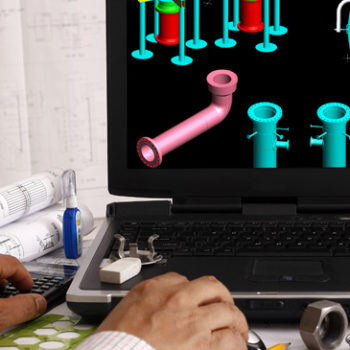
How many projects in your business have ground to a halt because someone was using the wrong version of the drawings for the project? Or the bill of material (BOM) was not up to date? Human error accounts for a high percentage of cost overruns. These errors cost a business time and money. A CAD interface program can greatly reduce these types of costly mistakes.
Changes Are Inevitable
Drawings created by 3D programs will at some point need to be changed or corrected. That is a standard part of the engineering process. In the past, an engineer would have to go into multiple views of each drawings and manually input the new data. Today, CAD programs like Solidworks®, Solid Edge™ and AutoCAD®, automatically update all the views at once. This has eliminated much of the human error in that process. Unfortunately, the transfer of those changes from engineering to the shop floor still leaves the process open to human error.
All it takes is one person working off an outdated version of the plans to put a wrench in the project. Additionally, these updates to the drawings create changes in the BOM. If these changes aren’t made quickly and accurately to the BOM being used on the shop floor, more costly mistakes can be made.
Increased Accuracy with CAD Interface Programs
Many of these human error issues can be solved and your manufacturing simplified by connecting your CAD program to a CAD interface that will transmit changes in drawings and BOM data digitally. When your BOM data is transmitted direct from CAD to your ERP software, you eliminate the data entry. This eliminates one opportunity for human error, as well as saving you the time component of manual entry. Keeping your BOM up to date and accurate, goes a long way in avoiding material processing errors. The list of components on the BOM updates with each design change.
When everyone on the shop floor has immediate access to the latest version drawings in digital format, the human error associated with paper documents goes away. It also eliminates the cost of having an engineer go back through your process to identify the mistake. Your orders move forward quicker and smoother when you do not have to go back and make corrections or track down the errors in design or materials. Utilizing a CAD interface can quickly pay for itself in its reduction of human error costs and in simplifying your manufacturing.